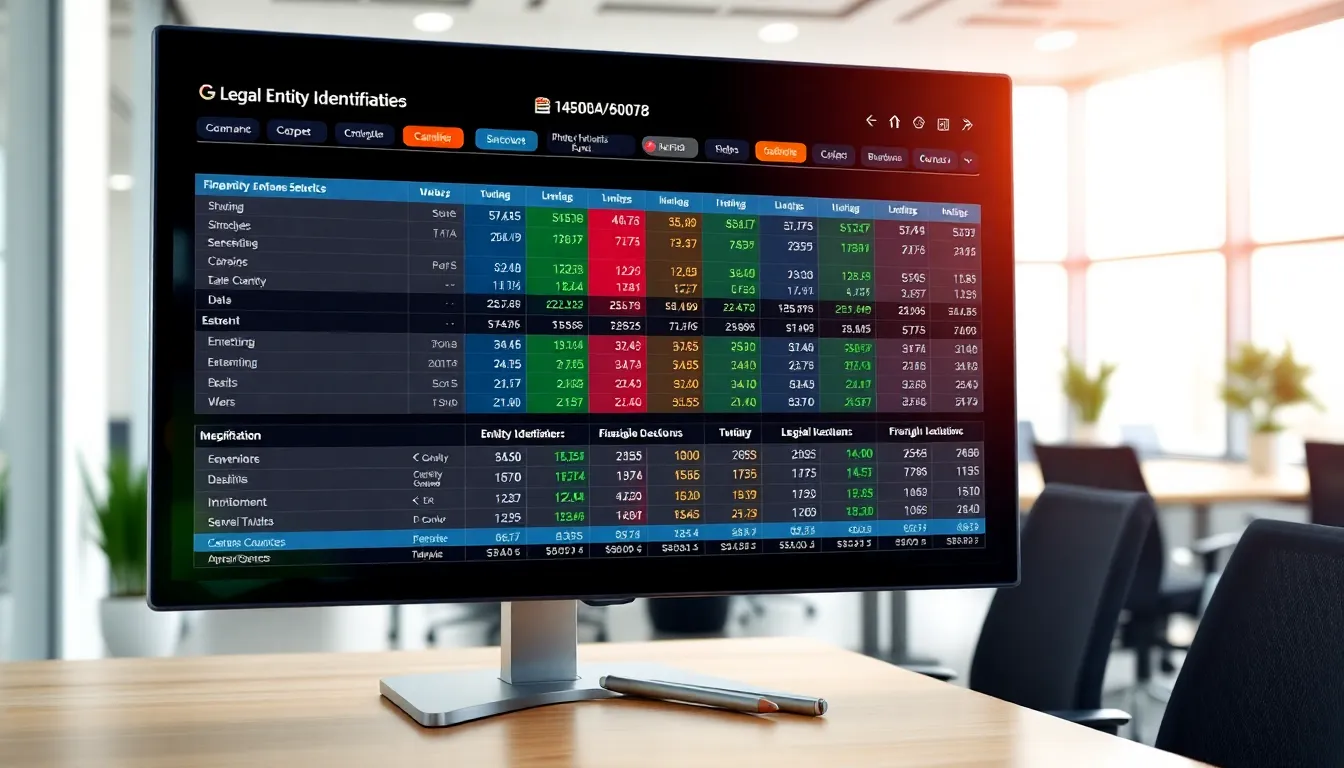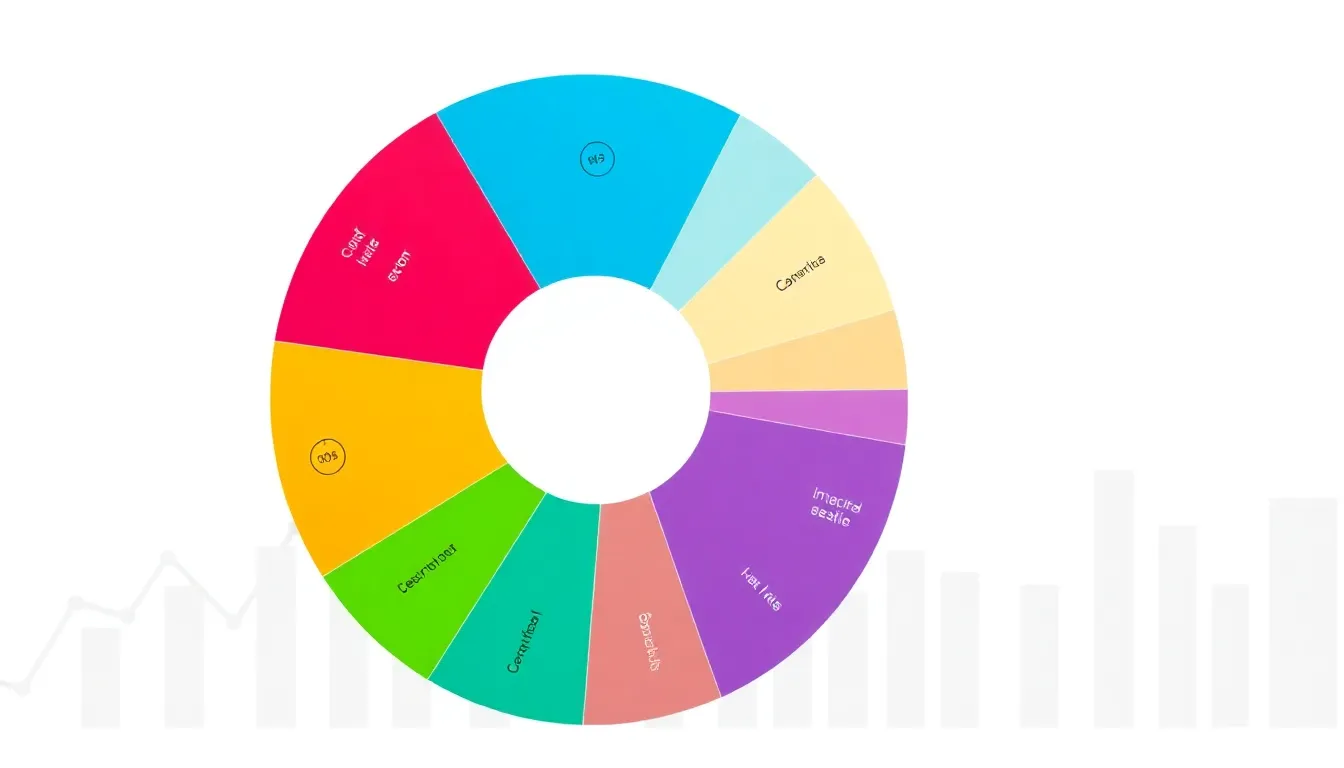Ever tried to navigate the world of data visualization and felt like you were deciphering ancient hieroglyphics? Enter the lei chart, a colorful hero in the realm of graphs that turns complex data into a feast for the eyes. This chart isn’t just a pretty face; it’s a powerful tool that can help anyone from analysts to casual data enthusiasts make sense of their information.
Imagine being able to showcase trends, patterns, and relationships in a way that even your pet goldfish could understand. With a lei chart, you can do just that! It’s time to ditch the boring bar graphs and embrace a more vibrant approach to data storytelling. Get ready to unlock the potential of your data and impress your audience with the charm and clarity of a lei chart.
Table of Contents
ToggleUnderstanding Lei Chart
Lei charts serve as a vivid and effective tool for visualizing data. These charts simplify complex datasets, making trends and relationships clear for diverse audiences.
What Is a Lei Chart?
A lei chart displays information in a circular format, representing data categories with colored segments. Each segment’s length and color encode data values, making it visually engaging. This design captures attention and aids in comprehension, offering an alternative to traditional graphs. For instance, when visualizing sales data, a lei chart can quickly communicate performance across various product lines, revealing insights at a glance.
Importance of Lei Chart in Finance
In finance, lei charts enhance data storytelling by illustrating investments and returns effectively. They facilitate the comparison of multiple financial instruments, helping investors identify patterns in portfolio performance. These charts condense complex data into digestible visuals, allowing for quicker decision-making. By employing lei charts, analysts can pinpoint trends, assess risks, and present financial data compellingly to stakeholders.
Components of a Lei Chart


Lei charts consist of several key components that enhance their effectiveness in data presentation. Understanding each component helps maximize the insights derived from these visual tools.
Legal Entity Identifier (LEI)
Legal Entity Identifiers serve as unique identification codes for entities involved in financial transactions. Each LEI consists of 20 alphanumeric characters, providing consistency in data tracking across different jurisdictions and organizations. Financial analysts utilize LEIs to reduce errors and increase transparency when assessing investments. These identifiers link directly to information about the entity’s ownership and regulatory status, making them essential for compliance and analysis within financial markets.
Data Fields in a Lei Chart
Data fields in a lei chart include various metrics that allow for a comprehensive view of financial information. Common fields consist of investment types, geographic locations, and performance indicators. Visual segments, distinguished by color, categorize these data points effectively, ensuring clarity and engagement. Users can quickly interpret trends and make comparisons among multiple entities due to these structured fields. Analyzing data fields can highlight risk factors, opportunities, and overall portfolio performance insights.
How to Read a Lei Chart
Reading a lei chart involves interpreting its unique circular structure and the colored segments representing various data categories. Each segment reveals essential information, making data analysis straightforward.
Interpreting the Data
To interpret the data effectively, examine the colors and their corresponding categories. Each color indicates a specific type of investment or performance metric. Analyzing the size and position of these segments provides insights into relationships and trends. Connections between segments reveal patterns, such as outperforming categories or areas needing attention. Assessing the overall layout helps identify key focus areas for further exploration.
Common Metrics and Indicators
Common metrics presented in lei charts include returns on investment, risk levels, and geographic distributions. Specific performance indicators, shown through color-coded segments, allow for quick evaluations of financial instruments. Investors often compare these indicators across different entities to gauge performance and risk profiles. Tracking location-based data highlights regional strengths and weaknesses. By using these metrics, stakeholders can make informed decisions promptly.
Applications of Lei Chart
Lei charts have diverse applications across various sectors, primarily enhancing data visualization and analysis. Professionals utilize these charts to streamline complex information into clear, understandable visuals.
Risk Management
Risk management benefits significantly from lei charts, as they allow analysts to visualize risk factors associated with different investments. Investors can quickly assess potential hazards by observing the size and position of colored segments. Each segment denotes a separate investment category, facilitating prompt identification of high-risk areas. This graphical representation simplifies the exploration of correlations among different assets. Portfolio managers leverage this clarity to devise strategies that minimize vulnerabilities and optimize returns. By incorporating lei charts, firms can enhance decision-making processes and ultimately safeguard their investments against unforeseen market changes.
Regulatory Compliance
Regulatory compliance is another key area where lei charts excel. Financial institutions use these charts to ensure compliance with various regulatory requirements. By representing legal entity identifiers and corresponding data fields visually, stakeholders can quickly ascertain their compliance status. Various segments highlight specific requirements, such as customer due diligence and risk assessments. Tracking these factors helps organizations remain transparent and accountable in their operations. Lei charts support firms in providing detailed reports to regulators while simplifying the complex regulatory landscape. They promote an efficient approach to compliance, enabling companies to focus on growth and innovation without compromising regulatory responsibilities.
The lei chart stands out as a powerful tool for data visualization that enhances understanding and engagement. Its unique circular format and vibrant color segments make complex data accessible to a broad audience. By simplifying the analysis of financial information and risk factors, it empowers investors and analysts to make informed decisions quickly.
Embracing lei charts not only elevates presentations but also fosters clarity in data storytelling. As organizations navigate the complexities of finance and regulatory compliance, the lei chart proves invaluable in promoting transparency and accountability. With its ability to condense intricate information into digestible visuals, the lei chart is set to become an essential asset in any data-driven strategy.








